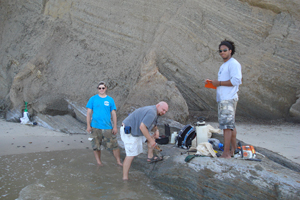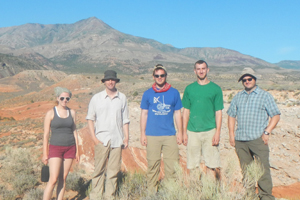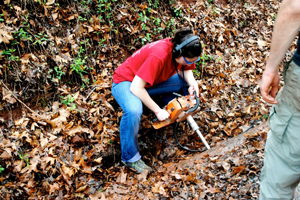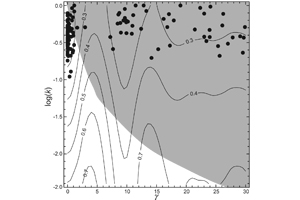Research

Southern Flank of Mt. Hillers, Henry Mountains, UT.
Research
|
|
Rigid Clast Rotation. Deformed granites form the core of the exposed belts of many ancient subduction zone complexes in the North American Cordillera. Kinematic analysis of these deformed granites can be difficult due to a lack of traditional strain markers (i.e. deformed pebbles or fossils). Feldspar porphyroclasts, however, are quite common. I am working with Joshua Davis (Carleton College) and Basil Tikoff (University of Wisconsin-Madison) to better understand the ways we can use these porphyroclasts to constrain both the vorticity of deformation and total strain accumulated in these systems. |
 |
Western Idaho Shear Zone. The western Idaho shear zone is a 100 km long belt of granitic mylonites on the western edge of the Idaho Batholith. These rocks record Late Cretaceous transpressional deformation and exhumation. My PhD research focused on attempting to understand the timing and kinematics of deformation both of transpression and exhumation. Since coming to Geneseo, my students and I have focused on attempting to better constraint he vorticity of deformation in this shear zone. |
 |
Central Range Fault Zone, Trinidad. GPS studies indicate that the Central Range fault zone accommodates modern plate motion between the Caribbean-South American in Trinidad. My students and I are investigating the Miocene to recent history of the fault zone. We have used strain modeling, paleomagnetism, gravity, and ArcGIS to constrain the vorticity of deformation and finite strain in the fault zone. Our current efforts focus on using thermochronology (Apatite fission track and U-Th/He zircon) and the topography to constraint timing of initiation of modern transpressional deformation. Our work in Trinidad is in collaboration with John Weber (Grand Valley State University) and Rebecca Flowers (University of Colorado-Boulder). |
 |
Pluton Emplacement, Henry Mountains, UT. Ever since Gilbert’s work in the late 1800’s, the Henry Mountains have be recognized as an ideal location to study the growth and formation of igneous bodies. Working with Eric Horsman (Eastern Carolina University) and Sven Morgan (Central Michigan University), we are using paleomagnetism to investigate how pluton form in the shallow crust. This research is funded by the National Science Foundation. |
 |
Triassic Extensional Deformation, Scottsville, VA. The break-up of Pangea during the Triassic is recorded on the east coast of the North America by a series of disconnected rift basins. As part of the Applied Geophysics class, students from Geneseo have been working in collaboration with students from the College of William and Mary to collect paleomagnetism data from sediments from the Scottsville Basin in central Virginia. Current work focuses on establishing the timing of magnetization with the goal of constraining the rotational component of extensional deformation. This project is in collaboration with Chuck Bailey (College of William and Mary). |
